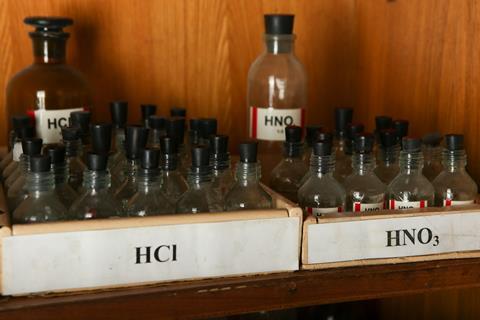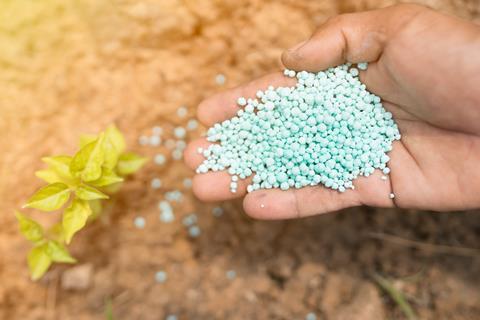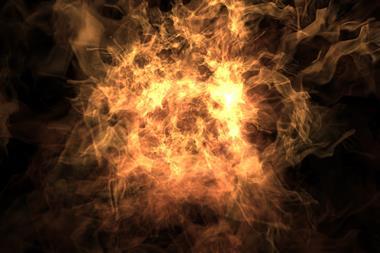Meera Senthilingam
This week, a compound deserving of more praise than it currently gets. At least, that's what Brian Clegg thinks:
Brian Clegg
Although chemists can devise some impressively catchy names -'photon', for example was coined by the chemist Gilbert Lewis - the standard naming conventions of chemistry can be a little dull. Nitric acid seems an uninspiring name for such a powerful compound. The old name 'aqua fortis' - literally strong water - has a much more appealing ring to it.

Nitric acid goes back a long way. It first appears in writing in the 13th century, described by two big names of the period, the German Albertus Magnus and the Spaniard Raymond Lull, who was first to use the term aqua fortis. It is possible that earlier proto-scientists could have known about nitric acid, such as the Arab alchemist Jabir ibn Hayyan, known in the west as Gerber. There are certainly references to producing what would now be called nitric acid in a book attributed to this ninth century scholar. Unfortunately, in the middle ages there were many works in circulation attributed to both ancient Greek and Arab scientists that later proved to be fakes, and it is likely that this reference is from one of these fraudulent medieval sources.
Since the early twentieth century, nitric acid has been made on a large scale commercially using the Ostwald process, named after the German chemist and Nobel prize winner, Wilhelm Ostwald. In this reaction, ammonia and oxygen combine at high temperature and pressure over a catalyst to produce nitric oxide (a simple molecule composed of a single nitrogen and oxygen atom bonded together). This reacts further with oxygen to make nitrogen dioxide. The nitrogen dioxide is then dissolved in water to produce nitric acid.

Most nitric acid is to some degree dilute - concentrated nitric acid is 68 per cent HNO3 by weight - though it is possible to obtain the pure liquid, where it gains the label 'fuming'. In principle the acid is colourless, but in practice a bottle of nitric acid in the lab will often have a yellow tint, imparted by the red-brown colour of dissolved nitrogen dioxide.
Strangely, for such a well-known acid, nitric acid can also act as a base with other strong acids like sulfuric acid. It is more familiar in the laboratory, however, in testing metals. Pure gold, for example, will not react with the acid, but many gold substitutes will. This ability to oxidise many materials also finds nitric acid used in some rocket fuels.
The commercial manufacture of nitric acid is a stepping stone on the route from ammonia to fertilisers and on to explosives like trinitrotoluene (TNT), nitrocellulose, nitroglycerine and Semtex. In all these cases, nitric acid contributes one or more NO2+ ions, whose inclusion in an organic compound provides bonds that will easily give up their energy. It also contributes the oxygen necessary to enable the combustion reaction to take place at an explosive rate.

Explosives are the bad boy applications of nitric acid, but one of those compounds, nitrocellulose, had much more constructive applications: being used to produce the film stock used in shooting movies until around 1950. Such old films have to be handled extremely carefully, as the plasticised compound can easily flash into flame.
Known to photographers as collodion, nitrocellulose also provided the matrix that held the silver salts in place in the first widely used true photographic process. As the great photographer Eadweard Muybridge commented: 'Every photographer was, in a great measure, his own chemist; he prepared his own dipping baths, made his own collodion, coated and developed his own plates, and frequently manufactured the chemicals necessary for his work.'
This, and its use in cleaning the glass plates, made nitric acid an essential for the photographer's toolkit in the 1870s.

While explosives remain a major derivative of nitric acid, the overwhelming majority of its industrial production - around 80 per cent - is used to make fertiliser, and specifically in producing ammonium nitrate. Though this too is a component of explosives, as various bomb plots featuring it have shown, it has transformed agriculture as a source of nitrates to enhance the productivity of the soil.
Nitric acid's commercial roles both have something of a negative taint. It is responsible for explosives and for the nitrates that get a bad press when they are overused and either enter the water supply or contribute to greenhouse gases and acid rain. Yet we should not forget that explosives have plenty of positive applications, and that the use of fertiliser derived from nitric acid is the only reason food is plentiful in many parts of the world. Nitric acid's score card may not be perfect, but as a workhorse of the chemical industry it deserves eight out of ten for effort.
Meera Senthilingam
Eight of ten. Not bad, but it is such a versatile compund. That was Brian Clegg with the many sides of nitric acid. Now, let's set the scene for next week's compound:
Josh Howgego
'Back in his home country, he had researched lights and glows in other creatures but this one is different. Differently glowing, and now he has found it. But now he needs more and more to study it, this new thing, this protein that does it all. Buckets of jellyfish, down at the docks, scooping them up. The young scientist makes sure not to grin or smile at all when he shows his results to the older man, but inside he is smiling so much that there is an ache.'
That's an extract from a short story by the author Tania Hershman in which she imagines the feelings of Osamu Shimomura as he discovered the green fluorescent protein as a young man in the 1960s.
The story of the green fluorescent protein and how it has revolutionised science begins in 1940s Japan.
Meera Senthilingam
And to find out the rest of that story, you're going to have to join Josh Howgego in next week's Chemistry in it's element. Until then, thank you for listening. I'm Meera Senthilingham.













No comments yet